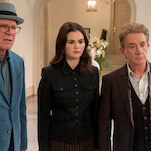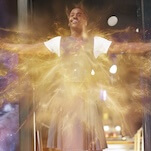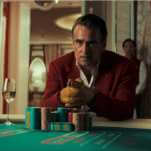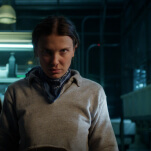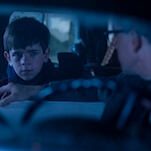The formula for making an exorcism movie is well-defined at this point: Take a young woman (preferably with two first names), put her in a nightgown and muss up her (long, wavy) hair, add white contact lenses, a heroic priest, and some animal noises played backwards, and voila! Which is all fine, except that it’s not how real-life exorcisms work, according to Mary Chasteen, who assists Father Vincent Lampert, Exorcist of the Catholic Archdiocese of Indianapolis.
Putting aside for a moment skepticism over whether God and the Devil are actually, you know, real, the Catholic Church technically never stopped performing exorcisms, even though the practice went dormant in the mid-20th century. The resurgence of interest in exorcism that followed devout Catholic William Peter Blatty’s novel The Exorcist and its hit film adaptation in the 1970s forced the church to re-examine the practice, however, particularly after rogue priests began performing exorcisms without church approval. Today, church law requires every diocese to have one priest trained in performing exorcisms, which are supposed to be a last resort after physical and mental health treatments have failed.
Nevertheless, the number of people seeking exorcisms has been on the rise in the 21st century, presumably part of our general march back into feudal darkness. Chasteen says a “good amount” of the people who come to her and Father Lampert are more in need of a doctor than a priest, and she will consult with a psychiatric nurse before even attempting an exorcism. Should the ritual actually be performed, she says, it’s a lot more about prayer than holy water and projectile vomit. Not terribly cinematic, in other words.
Chasteen also takes issue with the suddenness with which possession takes place in the movies, saying demons instead tend to creep in when a person has “given permission for the demonic to exert itself in your life” through sins like “adultery, fornication, uncleanness, lasciviousness, idolatry, witchcraft, hatred, variance, emulations, wrath, strife, seditions, heresies, envyings, murders, drunkenness, revellings, and such like.” (Yeah, yeah, we get it. Stay home and knit.)
One thing that Chasteen says that exorcism movies get right is the possessed’s ability to speak in languages they didn’t previously know. A possessed person is “somebody who knows things they shouldn’t know [and] speaks languages otherwise unknown to them,” she says. They also react violently to crucifixes and other holy objects, just like in the movies, she claims. How much of that is life imitating art, we may never know.
You can read more of Chasteen’s thoughts about movie vs. real-life exorcisms, including her reasoning about why the Annabelle movies are bullshit, at The Inverse.





